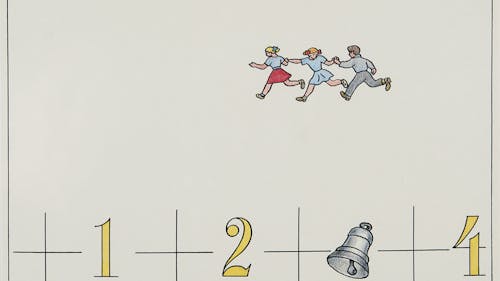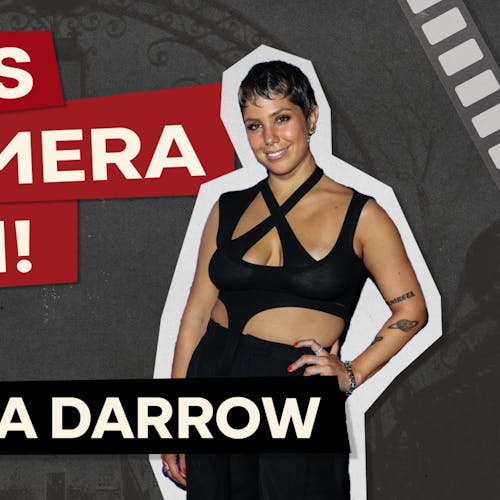Zimmerli Art Museum offers snapshots of Soviet life

The Zimmerli Art Museum hosted its first Art After Hours event of the decade and semester on Jan. 27, centering around an exhibition in the Dodge Wing Lower Level called “Dialogues — Ilya Kabakov and Viktor Pivovarov: Stories About Ourselves.”
Apart from the fantastic art at the museum, the event also had free activities, live entertainment and refreshments from 5 to 9 p.m. as a part of this monthly event.
The Zimmerli is an excellent on-campus resource at Rutgers for art historical knowledge, particularly when it comes to Russian and Soviet Nonconformist Art. The museum holds the world’s largest collection of Soviet Nonconformist Art, which has its origins in a gift from Nancy Dodge and Norton Dodge in 1991, the same year the Soviet Union fell.
This diverse, permanent collection of art comprises work from all the 15 republics of the USSR that did not abide by the rules of “official,” prescribed visual language of Socialist Realism in the later 20th century.
Socialist realism idealized strong men and women and glorified Soviet leaders. But the art at the Zimmerli isn’t all political and consists of Surrealist landscapes and artworks imbued with religious symbolism.
An enlightening tour of the “Dialogues” exhibition was given at 6 p.m. by guest curator Ksenia Nouril, who organized the exhibition alongside Julia Tulovsky and Jane Sharp. Nouril is a Rutgers Ph.D. alumna with experience working at institutions like the Museum of Modern Art (MoMA) in New York City.
She began the tour by calling the exhibit a “story of friendship” between Ilya Kabakov and Viktor Pivovarov and pointing out the many quotes by the two artists lined across the walls of the Lower Dodge Gallery.
This interesting exhibition looks at the multi-faceted visual arts genre of the album, which “unofficial” artists like Kabakov and Pivovarov devised, utilized and popularized in Moscow in the 1970s. The series of pages in an album marry image and text.
In the case of Kabakov and Pivovarov, the album narrates the tales of difficult quotidian life in the USSR in the 20th century. This art format was strategic and allowed artists to tell stories, in narrative and absurd fashions, about the banality of life in Moscow, a creative epicenter at the time.
The layout of the exhibition is made up of two parts: an outermost “circle" exploring the album and an innermost circle exploring the artists’ more conceptual, large-scale paintings.
The album was special and specific to the place and era it was created in, and on the tour, Nouril mentioned that the two living artists no longer practice in this medium. The multiplicity of the album’s meaning is perfectly described on the Zimmerli's website as “simultaneously a drawing and a novel, an installation and a performance.”
The “Dialogues” exhibition is text-heavy as albums, in many ways, resemble books. To help visitors better immerse themselves in the exhibit, the Zimmerli provides visitors with booklets containing translations of the works at the entrance to and the back of the gallery.
The “Dialogues” exhibition explores the full depth and breadth of both artists’ practices, by contrasting the two artists’ many albums with their paintings and children’s book illustrations from the same time. Kabakov and Pivovarov had shared creative experiences and outlets as they both worked in state publishing houses, illustrating children’s storybooks.
Some stand-out works include Pivovarov’s “No. 2, Sacralizators for a Friendly Party” and Kabakov’s “Shower — A Comedy,” which explore mundane their life experiences in novel ways and often take emotional and comical approaches to artmaking.
At the back of the gallery, there is a plexiglass case that Nouril emphasized on the tour which shows how albums were actually exhibited. This case is supplemented by archival photographs of the artists by Norton Dodge.
At 7 p.m., the Zimmerli put on a viewing of the 2013 documentary film “Ilya and Emilia Kabakov: Enter Here,” directed by Amei Wallach. Ilya and Emilia, husband and wife, immigrated to Long Island in the 1980s after fleeing Moscow. These two artists lived through the tyrannical era of Joseph Stalin and later became a part of the burgeoning underground art world in the mid to late 20th century in the Soviet Union.
Ultimately, the film’s premise explores the couple returning to Moscow in 2008 to put on a display of six art installations and recalling the memories of their youth in a place that they once called home.



